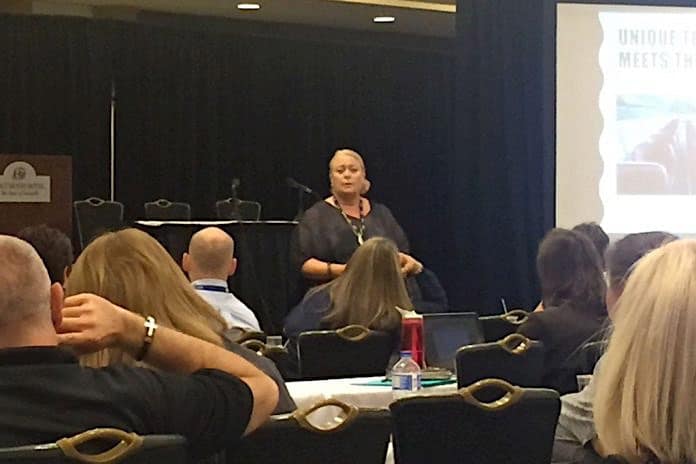LOUISVILLE, Ky. — Student transporters need to not only think outside the box but do so smartly by communicating with school staff, parents and students when determining and executing specialized transportation services, an expert told attendees at the TSD Conference.
Aptly titled “Making the Case for Specialized Transportation,” the Sunday afternoon session presented by Alexandra Robinson, executive director of the Office of Transportation at the New York City Department of Education and a behavioral specialist, stressed the importance of putting the student’s true needs first when planning transportation plans and considering the child’s true individual needs first and foremost, and before all else. This means that making generalities about disabilities is unacceptable and, thus, that there is no one-size-fits-all solution.
Instead, parents need to be involved to assist in making the best decisions for their children that also seek to provide tools to students to help them navigate life. This entails asking questions of parents and not assuming that because the parents say their child has, for example, asthma and they shouldn’t wait outside for the school bus because of emission fumes means that their child must have curb-to-curb service.
Robinson said similar requests need to be weighed against what is best for the child’s welfare as well as a path toward independence. It’s transportation’s responsibility to determine that if a student is unable to wait outside at the bus stop, then does the same student also not participate in health class once at school due to similar concerns? If the answer is no, Robinson cautioned that student transporters should not be guilty of busing the student in a more restrictive environment when a least restrictive environment is already attainable at school.
“One of hardest things to do is to talk to parents about, ‘What are you going to do when…?’” Robinson said. “Are their goals realistic as well? It’s a very difficult position to be in to be the messenger of this information.”
This entails incorporating contingency plans in the IEP that are put in place to encourage student independence. She used a hypothetical example of a student with a disability who requires the district to have a wheelchair-equipped bus for their transportation needs. Depending on the student’s disability, transportation along with the parents can set a goal for the student to board the bus by climbing the school bus steps unassisted four out of every five attempts. On the days when the student is physically unable to navigate the stepwell, the wheelchair lift is available to the child. For those times, the student is able to make the ascent, the child and their parents gain confidence.
“You have to come up with decisions and solutions for the parents, and ask for assistance,” Robinson said. “You have to come up with a plan. Don’t wait for special education to do it.”














